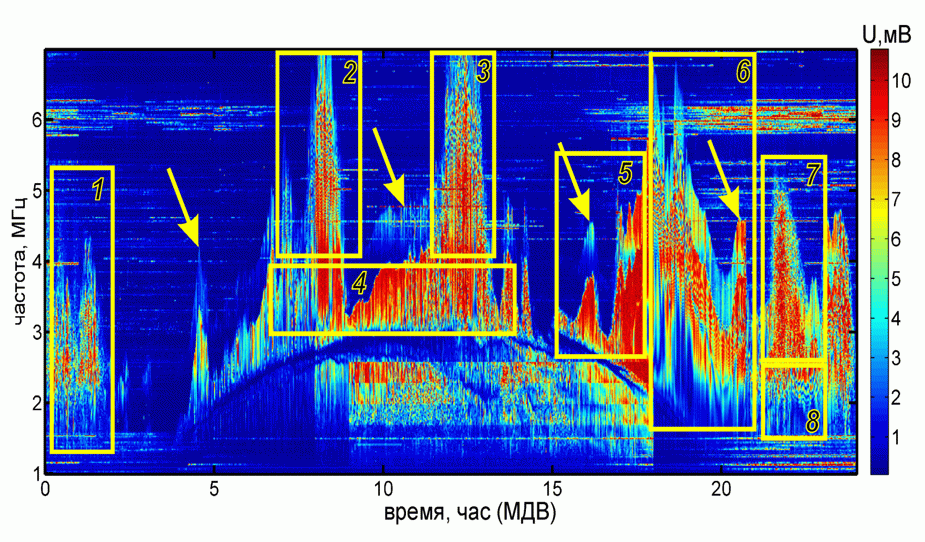Scientific Activity

The result of daily minute-by-minute sounding of the ionosphere in the form Of an A-map (amplitude).
Our main measuring instrument is a unique ionosonde "Cyclon" with high measurement cadence, resolution, contents, and flexibility needed for research. It is located in site out of Kazan. And despite the fact that due to the nature of his work the ionosonde itself is able to detect rare events and extract new effects in the ionosphere (a simple highlighting of weak MSTIDs on the base of amplitude variations, a typical signature of a response to the long and strong earthquakes, pairwise beats of o- and x-, and o-z-o- and x-mode in the traces of Es layer, recording of artificial ionospheric irregularities appearing at powerful heating) not previously revealed. But its maximum benefit in the discovery of new effects is only possible with cooperation with other devices, such as a dense network of GPS-receivers, airglow all sky imager, etc.
The team has a set of equipment consisting of its own network of very close (from 100 m to 40 km) GPS-GLONASS receiving stations and weather stations, which allows to study in detail the spatial structure of mesoscale tropospheric processes and conduct theoretical research in the field of satellite monitoring of the atmosphere. The accumulated series of continuous every-second observations since 2008 make it possible to develop empirical models of mesoscale processes. Currently, this network is used to assess the parameters of the atmosphere (integral moisture content) and is a promising tool for its study. Such studies are relevant, as they allow not only to create pictures of humidity fields, clarifying meteorological forecasts, but also to develop methods to improve the accuracy of satellite positioning systems and to look for cause-and-effect relationships between the lower atmosphere and the ionosphere.
